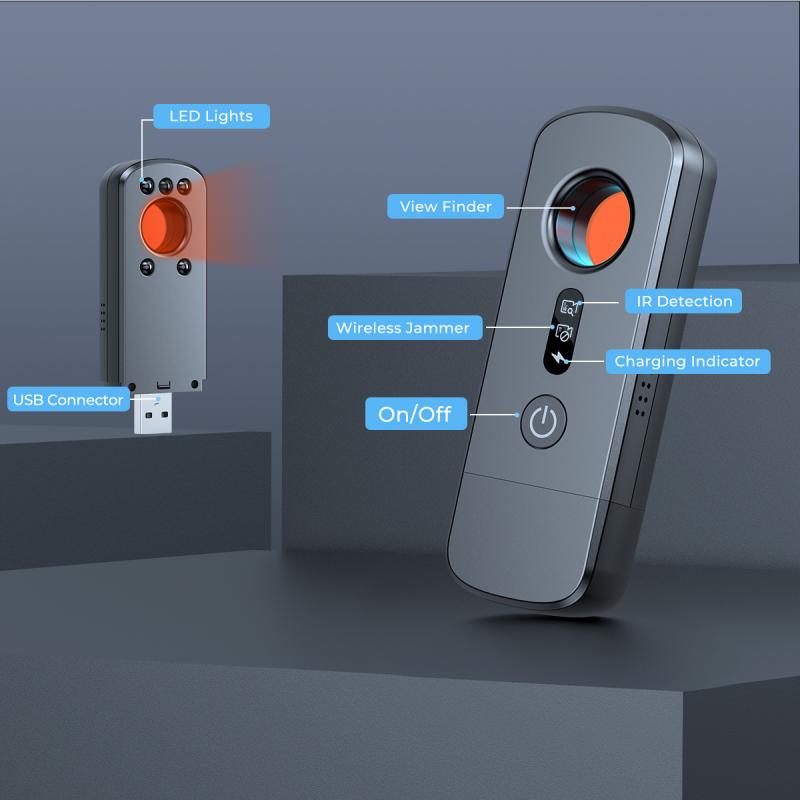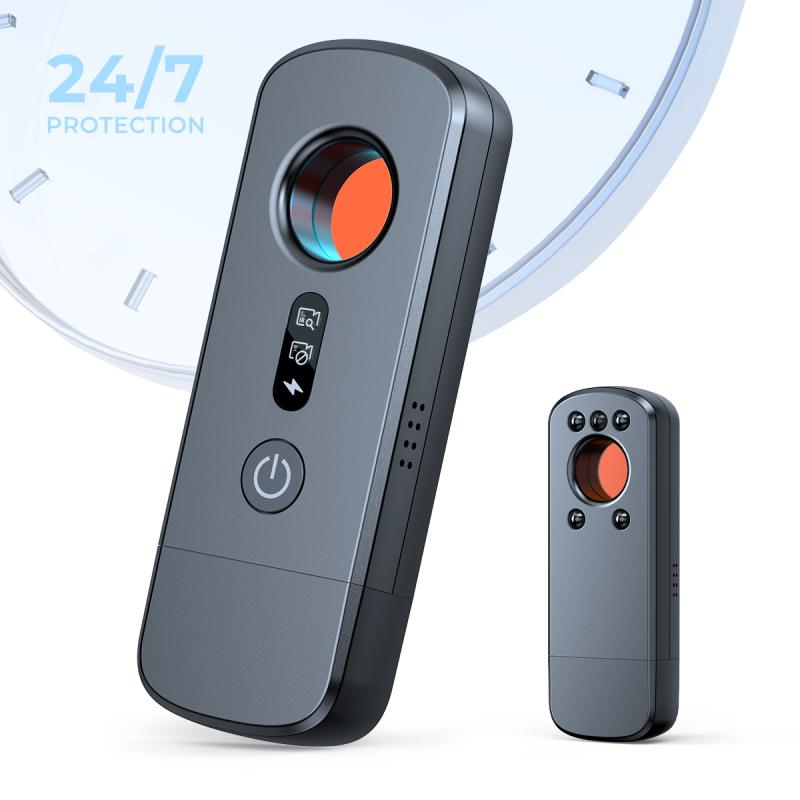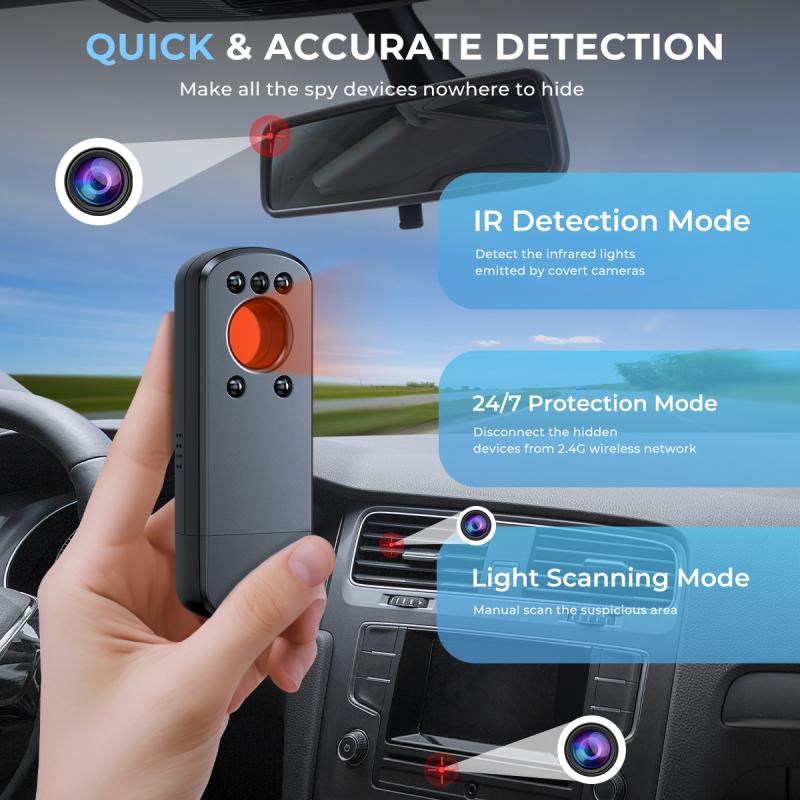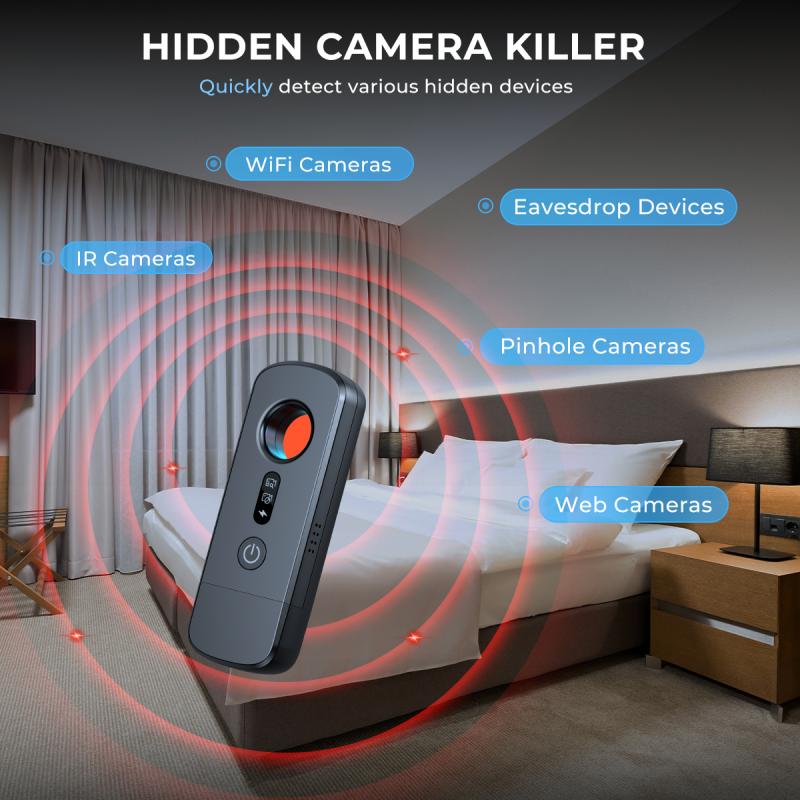How To Find Hidden Cameras In A Room?
In today's world, privacy is a growing concern, and the possibility of hidden cameras in private spaces is a real threat. Whether you're staying in a hotel, renting an Airbnb, or even suspecting surveillance in your own home, knowing how to detect hidden cameras can provide peace of mind and protect your privacy. This article will guide you through practical steps to find hidden cameras in a room, ensuring you can safeguard your personal space effectively.
Understanding Hidden Cameras

Hidden cameras come in various shapes and sizes, often disguised as everyday objects such as smoke detectors, alarm clocks, air purifiers, or even electrical outlets. They can be wired or wireless, and some are equipped with night vision capabilities. The first step in detecting hidden cameras is understanding where they might be placed and what they might look like.
Visual Inspection

The simplest method to start with is a thorough visual inspection of the room. Here are some steps to follow:
1. Look for Unusual Objects: Check for objects that seem out of place or have an unusual design. Hidden cameras are often disguised as common items, so pay attention to anything that looks suspicious.
2. Check for Small Holes: Cameras need a line of sight to capture images, so look for small holes or openings in walls, ceilings, or objects. These could be the lens of a hidden camera.
3. Inspect Mirrors: Some hidden cameras are placed behind two-way mirrors. To check if a mirror is two-way, place your fingernail against the glass. If there’s a gap between your nail and its reflection, it’s a regular mirror. If there’s no gap, it could be a two-way mirror with a camera behind it.
4. Examine Smoke Detectors and Alarm Clocks: These are common hiding spots for cameras. Look closely at these devices for any unusual features or extra wires.
Using Technology to Detect Cameras

While a visual inspection is a good start, technology can significantly enhance your ability to detect hidden cameras. Here are some tools and techniques:
1. Flashlight Method: Turn off the lights in the room and use a flashlight to scan the area. Hidden camera lenses will often reflect light, making them easier to spot in the dark.
2. Smartphone Camera: Some hidden cameras emit infrared (IR) light, which is invisible to the naked eye but can be detected by a smartphone camera. Turn off the lights and use your phone’s camera to scan the room. Look for any bright spots that could indicate an IR light source.
3. RF Detector: Radio Frequency (RF) detectors can help locate wireless cameras by detecting the signals they emit. These devices are available online and can be a valuable tool in your search.
4. Network Scanners: If you suspect a hidden camera is connected to the local Wi-Fi network, use a network scanner app to identify all devices connected to the network. Look for any unfamiliar devices that could be cameras.
Physical Inspection

In addition to visual and technological methods, a physical inspection can help uncover hidden cameras:
1. Check Vents and Air Purifiers: These are common hiding spots for cameras. Remove the covers and inspect the inside for any hidden devices.
2. Examine Electrical Outlets and Light Switches: Unscrew the covers and look for any additional wiring or devices that don’t belong.
3. Inspect Furniture: Look under tables, chairs, and other furniture for any hidden cameras. Pay attention to any modifications or additions that seem out of place.
Professional Help
If you’re still unsure or want to be extra cautious, consider hiring a professional to conduct a thorough sweep of the room. Professionals have specialized equipment and expertise to detect even the most well-hidden cameras.
Legal Considerations
It’s important to be aware of the legal implications of finding a hidden camera. In many jurisdictions, it’s illegal to place hidden cameras in private spaces without consent. If you find a hidden camera, document its location and contact the authorities to report the violation of your privacy.
Preventive Measures
To prevent hidden cameras from being placed in your space in the future, consider the following measures:
1. Regular Inspections: Make it a habit to regularly inspect your living or working space for hidden cameras.
2. Use Camera Detectors: Invest in a good quality camera detector and use it periodically to scan your space.
3. Secure Your Network: Ensure your Wi-Fi network is secure with a strong password to prevent unauthorized access to connected devices.
4. Cover Cameras: If you have devices with built-in cameras, such as laptops or smart TVs, use camera covers when they’re not in use.
Finding hidden cameras in a room requires a combination of visual inspection, technological tools, and physical examination. By following the steps outlined in this article, you can effectively detect hidden cameras and protect your privacy. Remember to stay vigilant and take preventive measures to ensure your personal space remains secure. If you ever find a hidden camera, don’t hesitate to report it to the authorities to address the violation of your privacy rights.
